20 Days Iran Classical Tour
Flight to Tabriz.
Pre-reserve
Iran has so many mosques displaying ancient Persian art and architecture. One of the historical and important mosques of Iran is Blue Mosque in Tabriz. It is a rare mosque in blue. The reason it is called the Blue Mosque or Kabud Mosque is the blue tiles used in the structure.
The Azerbaijan museum is the first and oldest museum in the northwestern part of the country, and the exhibits that you can find inside of it include objects from different archaeological sites throughout the country and cover the full chronological span of its history, making the museum one of the most important in Iran and a truly national one
If you like, you can take a walk in the El-Gülü Park in the evening.
O/N in Tabriz (breakfast)
Maragheh Observatory was one of the largest and most famous Islamic observatory in the world with great observational instruments of high precision, related to the period before the telescope was invented. The building was founded by Khawaja Nasir-e-Din Tusi order, the philosopher, mathematician and the great astronomer of the Illkhani and the command of Holaku khan on a hill in West Maragheh.
The Kabud Dom is noted for its beauty, being a ten-sided prism like in shape. It is said to be the tomb of the mother of Hollakoo. This structure dates back to the 6th and 7th century AH.
O/N in Maragheh (breakfast)
The Takhte Soleyman complex consists of several structures, including a Zoroastrian fire temple, a palace, and a mysterious lake. According to the myths that locals say, there is a city of gold at the bottom of this city and no one has ever made to the bottom of the lake and many people have been disappeared after stepping into it. This lake is more than 75 meters deep but the thick layer of sediment doesn’t let the divers to reach the bottom and explore the lake. Although the weather in Takab gets freezing during winter and the temperature reaches 20 in summer, the temperature of water in this secretive lake is the same all year around.
O/N in Takab (breakfast)
Arrive in Zanjan we visit the Rakhtshooy Khaneh, also known as the Edifice of Rakhtshooy Khaneh, a historical lavoir (a wash-house for clothing), which lies at the historical center of the Zanjan city and it was built nearly 20th century. This place was used for washing clothes by women around the city.
O/N in Zanjan (breakfast)
Today we visit the tomb of Avicenna. He was the great philosopher, scholar, physician of Iran (370-428 AH). Then we visit the Ganj Nameh. These inscriptions are relics from the period of ‘Darius’ and ‘Khashayar Shah’ of the Achaemenian era. Each of these inscriptions have been segregated into three columns with twenty lines, and in three languages of ancient ‘Parsi’, ‘Baboli’ and ‘Ilami’. The Parsi text is to the left of these two inscriptions, the Baboli text is in the center followed by the Ilami text to the right of the engravings. The engraved tablet to the left is related to Darius the Great, under which is the engraving related to the period of Khashayar Shah. In the afternoon we see the tomb of Esther & Mordechai (closed every Saturdays)
O/N in Hamadan (breakfast)
Early morning drive to Ahvaz, the oil city of Iran.
O/N in Isfahan (breakfast)
O/N in Tehran (breakfast)
O/N in Tehran (breakfast)
Depends on the time of flight, transfer to the airport and departure
Included Services
- 19 nights in the mentioned hotel rooms
- B/B services (bed & breakfast)
- All transfer fees to the airport – hotel – airport
- English/German/Italian or French speaking guide for the whole trip (depends on the customer’s request)
- All admission fees according to the itinerary
- Comfortable A/C vehicle
- Coffee and tea during cross-country drives and two bottle (½ Litter) mineral water per day and person.
- Iranian visa support
- A map of Iran for each person
Not Included Services
- Guide & driver’s & Luggage porter tips
- All taxes and visa fees
- All domestic & international flight

Kashan was a dream — the traditional houses were like living museums. PITO made sure we had time to explore every detail. I’m still thinking about those stained-glass windows
Walking through Shiraz’s gardens felt like poetry. Thanks to PITO’s thoughtful planning, I got to experience the city’s soul, not just the sights
In Yazd, the silence of the old city and the sound of the windcatchers inspired me deeply. PITO’s pacing was perfect for reflection and creativity
Kerman’s desert landscapes were surreal. PITO arranged a sunrise walk in the Lut Desert — easily one of the most unforgettable moments of my life
Visiting Persepolis was like walking through time. PITO’s guide brought the ancient world to life with passion and precision













No comment